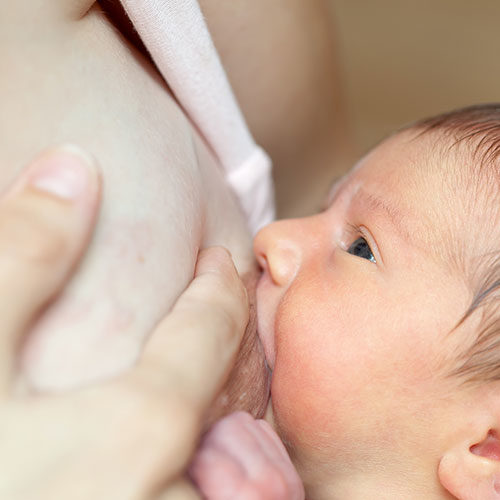Ideally, bottles should be avoided because of the potential risks of using bottles. Alternatives to bottles and the risks of using bottles have been shared here.
But, if the family wishes to or if the baby does not accept the alternatives to bottles, Paced Bottle Feeding can be helpful. Paced Bottle Feeding is a technique in which the milk from the bottle does not flow at a high pace, which could later cause preference to bottle feeding and thereafter breast rejection. It involves pacing the feeds so that the baby can be in control of her intake of milk only until satiety and will not typically overfeed.
Paced feeding to an extent helps to avoid nipple confusion or nipple preference to bottle teats because the baby is directed to consume milk slowly and work harder as compared to regular bottle feeding.
- Use a broad teat bottle so that the baby’s mouth is flared around the bottle nipples, just like she would be latched with a mouthful of mother’s areola.
- Very important to feed the baby on demand only when she displays hunger cues like smacking the lips, thrusting the tongue out, rooting by taking hands to mouth etc (hand to mouth is not a hunger cue after 2.5-3.5 months). Offer a small batch of Expressed Breast Milk or Breast Milk Substitutes (BMS) (until the baby is weaned off it).
- Baby is held at an angle upright and is not lying down on the lap of the caregiver or mother.
- The caregiver tickles the baby’s lips with a bottle and encourages the baby to open her mouth wide.
- The bottle teat is then put into the baby’s mouth.
- The bottle is held horizontally, which slows down the flow significantly.
- After 20–30 seconds of feeding, the bottle is tipped downward or removed from the baby’s mouth to stop the flow of milk (creating a similar pattern as in breastfeeding, where milk does not flow continuously).
- Switch sides while Paced Bottle Feeding – move baby from one side to the other halfway through the feeding. This helps the baby avoid a side preference, and allows for new views and eye contact.
Signs to stop feeding
- Baby unlatches from the teat
- Slower sucking
- Eyes wandering
- Falling asleep
- Hands are open and relaxed
It is best to offer Expressed Breast Milk/ Breast Milk Substitutes in small batches so that there is lesser waste and lower chances of overfeeding when the baby is done. Once you observe the above signs, please stop the feed, and do not force the baby to finish the milk in the bottle if there is any leftover milk.
If you are seeking one-on-one lactation support from the comfort of your home, Breastfeeding Support for Indian Mothers offers Online Lactation Consultation, which can be booked here.
We also provide volunteer support on our 24X7 support group on Facebook, which you can join by clicking here.
P.S.: We do not accept Facebook profiles with inaccessible information. If your profile is locked/ inaccessible, you will need to send a Personal Message to our Facebook Page to join our free Facebook support group.
Wish to speak with a member of our team who is a certified lactation professional and also an experienced breastfeeding mother, click on this link.
Medical Advice Disclaimer
THIS WEBSITE DOES NOT PROVIDE MEDICAL ADVICE.
The information, including but not limited to, text, graphics, images and other material contained on this website are for informational purposes only. No material on this site is intended to be a substitute for professional medical advice, diagnosis or treatment. Always seek the advice of your physician or other qualified health care provider with any questions you may have regarding a medical condition or treatment before undertaking a new health care regimen, and never disregard professional medical advice or delay in seeking it because of something you have read on this website.
Disclaimer
We understand and acknowledge that parents and babies can be of various genders on a spectrum of LGBTQI+. Families come in diverse flavours. However, in our articles, for the sake of simplicity and convenience, we will be referring to the breastfeeding parent as the mother and using the female pronouns- ‘she’ and ‘her’ for babies. Babies can be nourished and nurtured in different ways and while we have used the terms breastfeeding and nursing, we recognize that parents can opt to chest feed or finger feed.
We don’t have conflicts of interest and declare, and we are compliant with the WHO code of marketing of breastmilk substitutes and the IMS act.
In case you find any information on this website that needs to be updated, please write to us at info@bsim.org.in






